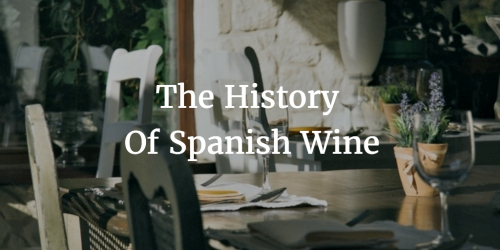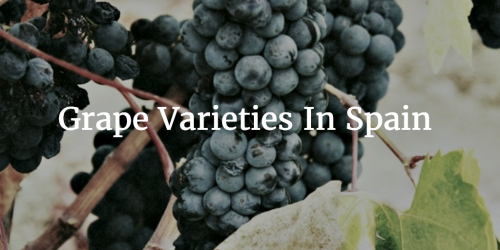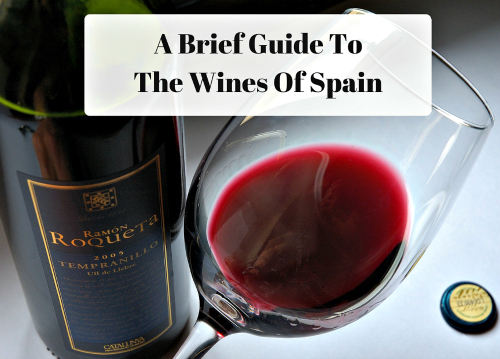French wines were once the most popular in the world, and France still remains the largest producer of wine, followed by Italy. However, over the course of the last few decades, the wine-drinking world has been shaken up considerably. It’s not just the fact that New World wines – from places like Australia, South Africa, the USA, and Chile – have come into their own, but for many wine drinkers, Spanish wine is seeing a significant growth in popularity.This isn’t at all surprising, and it’s about time Spanish wine got the recognition it deserves. Spain has a long and rich history in winemaking, stretching about as far back as that of France and Italy, with numerous unique varieties of grapes that are indigenous to the region. The quality of Spanish wine has gone up and down over the centuries, but in the last few decades winemakers in the country have begun to focus on high quality wines and have been attracting a lot of attention. If you haven’t yet gotten around to trying one of these delicious wines, here’s a quick introduction.
A brief history of wine in Spain
Spain has hundreds of native varieties of grapes and so has been making wine for thousands of years. The years before the Roman conquest of the region saw a number of advances in vine cultivation and winemaking, but it was under Roman rule that Spanish wine really reached its first peak. The regions we now know as Tarragona and Andalucía were the main wine-producing regions of the time, but Spanish wine from these and other regions was transported and drunk all across the Roman Empire. It’s difficult to know exactly how good or bad this wine was, but based on the writings that survive, it seems like the quality varied greatly. There were highly acclaimed and sought-after Spanish wines, and there were others that were just good for getting drunk.

During the decline of the Roman Empire and the Moorish conquest of Spain, wine production continued in Spain, but wine exports declined. It was only after the Spanish Reconquista, in which Christian kingdoms conquered Spanish territory and drove out the Moors, that Spanish wine once again made its presence felt around the world. By the 14th century, high quality Spanish wines were being sold in England, where they competed with wines from France and Italy, and rich Spanish wine was being illegally blended with certain weak French and German wines for a better balance.
The Spanish colonies that were established in the centuries that followed meant new markets and the further spread of Spanish wine as well as Spanish grapes. Wine continued to be a major source of income for Spain as its fortunes rose and fell, but the country’s winemakers fell behind as the Industrial Revolution began and winemakers in other parts of Europe embraced the new techniques and technologies. Eventually however, the phylloxera epidemic that devastated French vineyards in the second half of the 19th century provided Spanish wine with an opportunity to reassert itself.
The wars and revolutions of the 20th century one again disrupted Spanish winemaking, but over the last few decades, especially with the economic benefits of Spain’s entry into the European Union, the embrace of technology and modernization, and the increased focus on high quality wines, Spanish wine is doing better than ever before.
Grape varieties in Spain
Spain has more than 400 different varieties of native grapes, many of which have very unique, distinctive characteristics that are now associated with Spanish wine. In recent years, Spanish vineyards and winemakers have been growing and using popular international varieties too, such as Cabernet Sauvignon, Merlot, and Chardonnay, but for the most part local varieties continue to be dominant. These are a few of the native varieties of grapes that are especially popular in Spain and are most widely used today.

Airén: This is a sturdy variety that some say is the most widely planted grape for white wines in the world, even though it’s mostly planted only in the country’s central regions. Traditionally, it was also the base for Spanish brandy. However, it makes for more delicate wines, and some winemakers are now switching to more voluptuous varieties.
Tempranillo: Tempranillo is not as widely planted as Airén, but it is certainly Spain’s most well known grape, used to make famous red wines from Rioja to Ribera del Duero. The characteristics of the wine vary considerably depending upon the region in which the grapes are grown.
Garnacha: A variety that was once more common than Tempranillo, Garnacha is better known as Grenache in other parts of the world and is still widely planted in the Priorat region. Garnacha makes fruity red wines.
Monastrell: This variety is more familiar to people as the French Mourvèdre, but the Spanish wines that come from Jumilla and Yecla are usually of a higher quality. The grapes are used for dry rosés and spicy, dark reds.
Bobal: Bobal is a rich-tasting but cheap variety that is mostly used for blending and for rosés, but some producers in regions like Valencia also use it by itself to create red wines.
Albariño: This is a popular variety in the northwest, where it is used to create some of Spain’s best white wines. The wines produced from Albariño are surprisingly diverse – some are rich and fruity, while others are crisp and tart.
Verdejo: A variety that is widely grown in the Rueda region, Verdejo was traditionally used to make a sherry-like wine, but is now extremely popular for light, crisp white wines with notes of melon and apple.
Macabeo: Known as Maccabeu in France, this is a common variety in the Rioja and Penedes regions, but it is also gaining popularity in other parts of the country. It is mostly used for young whites and for blending into Cava.
Parellada: Parellada is also used in Cava, where it often provides the bulk of the blend. This white variety is mainly grown in Catalonia, and is also used to make some decent table wines.
Xarel·lo: This is the third variety that is commonly used in Cava, but in recent years, high quality single varieties have also been produced by some winemakers. Xarel·lo is also grown in Catalonia.
Palomino: Palomino is the main variety of grape that is used in sherries, and primarily comes from the sherry-producing regions of Andalucía. It produces poor quality table wines, but an amazingly complex and diverse range of sherries.
Pedro Ximénez: This is another white variety that is used to make sherry, but it usually creates much sweeter, more intense sherries than Palomino.
Classification and labeling
Firstly, it’s important to note that most of the grape varieties listed may not always appear on labels under the same name. These varieties have different names in other parts of the world, and in addition, they also have different local names in other regions of Spain. As a result, unless you’re really well versed with Spanish wine, particularly the hundreds of names that exist, you may want to look up a name online each time you buy Spanish wine.

As with wine labels from any other part of the world, you’ll also find information such as the name of the winery, the producer and bottler, and the vintage of the wine. Information that will take some deciphering is the classification under the Denominación de Origen (DO) system. This is a complex system that has made Spanish wine labels difficult to read, but it does provide some useful information. Similar to the systems that exist in France and Italy, the DO system is meant to certify and regulate the quality and the geographic origin of Spanish wines. These are the classifications that you’ll see on your wine bottle.
Denominación de Origen Calificada (DOCa): This is the highest level under the DO system, and is a guarantee of the best quality. Only the regions of Rioja and Priorat are allowed to use this classification.
Vino de Pago (VP): These are again wines of the highest quality, but they are typically unable to get DOCa status for a variety of reasons. There are only 14 wine estates that are allowed to use the Vino de Pago classification.
Denominación de Origen (DO): This is the classification that you’re most likely to find, and it essentially guarantees the wine’s geographical origin and style, as well as adherence to certain clearly defined growing and winemaking techniques that assure a certain level of quality.
Vinos de Calidad con Indicación Geográfica (VCIG or VC): This is an intermediate category that was established to accommodate winemakers who were almost at DO level but not there yet. These are good quality wines from a specific region, and will in all probability achieve DO status in a few more years.
Vinos de la Tierra (VdlT): The title of this category roughly translates to “wine of the land”, and designates a wide geographic region of origin The requirements for this category are not very strict, allowing for great variety in style and quality.
Vino de Mesa (VdM): These are essentially table wines. It should however be mentioned that some excellent wines fall into this category, since winemakers who want more freedom and flexibility sometimes avoid the other, more restrictive classifications.
Other important information that you’ll typically find on the label is the aging designation. Some wines are un-aged and are meant to be consumed within a year after bottling, while others spend several years being aged before bottling, and can then be aged even further. A wine that is labeled as vino joven or sin crianza is a young wine, meant to be drunk young. A wine labeled as crianza has been aged for at least two years if red, and for at least one year if white or rosé, with at least six months in oak.
Reserva means that the wine has spent at least three years aging (with at least one year in oak) if red, and at least two years aging (with at least six months in oak) if white or a rosé. Wines labeled Gran Reserva have undergone the most aging – reds in this category have undergone at least five years of aging, including at least 18 months in oak, and then at least 36 months in the bottle; whites and rosés have undergone at least four years of aging, including at least six months in oak.
Sherry and Cava
Both sherry and cava deserve a special mention in any discussion of Spanish wine. Sherry is a fortified, aged wine that is made in the southern parts of Spain. The wine naturally undergoes additional fermentation during the barrel aging process, reaching a slightly higher alcohol level, which is then further boosted with the addition of brandy until the sherry reaches a strength of at least 15.5%. Sherries range in style from the light and delicate Fino to the oxidized, dry Amontillado, and the slightly salty Manzanilla to the rich, sweet, and strong Pedro Ximenez. The Palomino grape is the variety that is used for most sherries, but Moscatel and Pedro Ximenez are also used to some extent.

Cava is a sparkling wine that is native to Spain and is primarily made in parts of Catalonia. The wine has DO status, and must be made according to the traditional method (the méthode champenoise that French champagne uses) in order to be called cava. By law, other sparkling wines are simply known as “vinos espumosos”. Colloquially however, the nomenclature is not very strict – for example, people often continue to call Cava champaña or xampany, the Spanish and Catalan words for champagne. Like champagne, cava has many varieties, ranging from the bone dry to the very sweet.
by Garreth D'Mello
What’s your favourite Spanish wine? Let us know in the comments!

